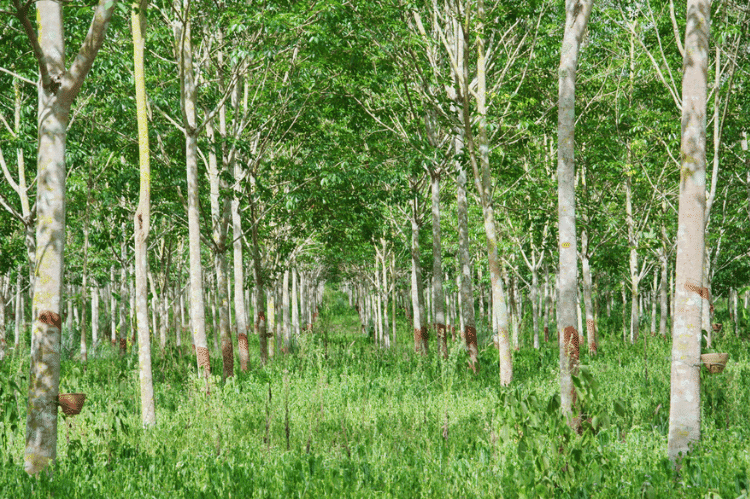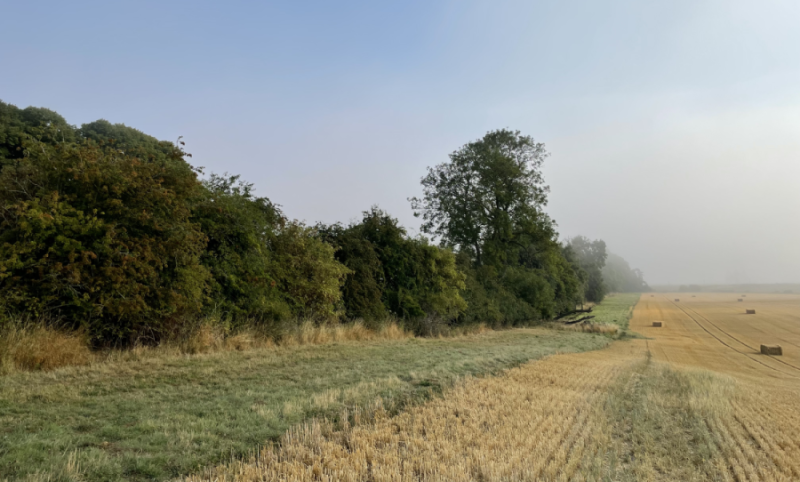Woodland & Hedgerows
Woodland and hedgerows on farms are important resources for providing habitats for livestock and biodiversity, climate resilience buffers, potential carbon sinks and income streams, and overall enhancing the natural capital of your farm.
From a carbon perspective, both habitats can offer means to build carbon sinks on farm, through maintenance, enhancement or expansion, providing a means to increase carbon sequestration on your farm's carbon balance sheet.
This page link to resources on the carbon capture potential of woodlands and hedgerows, ways to optimise these, and options for financing management. FAS Sound's Natural Capital podcast provides regular insights into carbon and other aspects of managing natural resources on farm.
Woodland for Carbon
Woodland Carbon Guides & Articles
An Introduction to Woodland Carbon
Woodland Creation and Carbon Sales
Trees and carbon capture – The Science
Information Note: Trees and carbon capture

Hedgerow Management
Hedges offer farmers, crofters and landowners the opportunity to enhance farm natural capital reserves without compromising productive farmland or creating new farm habitats. Creation and management of these important linear features can have a series of important benefits, including:
- Increased farmland biodiversity
- Improved livestock productivity
- Farmland biosecurity
- Increasing resilience to climate change

Promote Biodiversity
Farmland birds have seen a significant decline since the 1950s. The addition of hedgerows on your farm can help birds like the skylark and lapwing bounce back. Hedgerows provide birds with what is collectively known as ‘the big three’:
- Access to invertebrate-rich habitats to feed their chicks during the breeding season.
- Seeds and berries to sustain populations throughout the winter.
- Safe places to nest and rear chicks.
Improve Livestock Productivity
Hedgerows provide shade and shelter from the weather improving not only the health and welfare of livestock but overall productivity. For example, hedges offer shelter from poor weather which reduces exposure in young lambs. Similarly, the shelter in the summer ensures that fertility and growth rates of livestock are not compromised.
Ensure Biosecurity
Hedges between fields particularly on the boundary between you and your neighbour can prevent nose-to-nose contact of animals reducing the spread of diseases such as Bovine Viral Diarrhoea. A thick stockproof hedge can also be of value as the boundary in an isolation field to keep purchased stock separate from your current flock/herd when they initially move onto the farm.
Increase Your Farm’s Resilience
Hedges have an important role to play in water absorption. The deep roots of hedges help soils absorb a greater quantity of water reducing the quantity of water that will run off the surface. This has additional benefits in terms of reducing soil erosion and preventing sediment reaching burns and rivers. As the climate changes and we experience increased rainfall, hedges offer a real advantage to protecting farmland and crops from flooding and soil erosion.
Next Steps
If you’d like to learn more about the benefits of adding hedgerows to your farm. We’d recommend reviewing our technical note on hedges or our practical guide.
The peoples trust for endangered species have a wealth of information on their website.
Hedgelink is a resource where people and organisations can share knowledge and approaches about how to cultivate hedges throughout the UK.
Sign up to the FAS newsletter
Receive updates on news, events and publications from Scotland’s Farm Advisory Service
